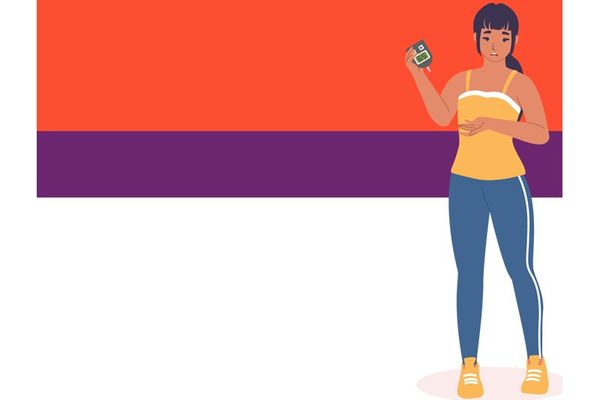November is American Diabetes Month, a good time to think about how you can prevent diabetes, a disease that can drive up national medical and other costs into the billions of dollars each year.
You cannot prevent all types of diabetes: Type 1, which accounts for 5 percent to 10 percent of all cases of diabetes, is an autoimmune disorder that is usually diagnosed during childhood or young adulthood and occurs when the body's immune system attacks and disables the pancreas' insulin-producing cells. It can be controlled with insulin therapy and other treatments.
But type 2—once called adult-onset diabetes—is a whole other story. You may be able to stop it before it starts—and doing so will put you at a lower risk of joining the almost 30 million Americans who deal with this chronic condition, which puts you at risk for problems like kidney disease, high blood pressure, stroke, blindness, and nerve and circulation damage that can lead to foot and leg amputations.
In type 2 diabetes, your body is unable to use insulin properly—a problem known as insulin resistance. The pancreas makes extra insulin to keep up with the demand. But, over time, the pancreas is unable to do the work that helps maintain normal blood glucose levels.
What's frightening is that type 2 diabetes is showing up in teenagers and children. What's perhaps even more frightening is that of the people who have it, almost 6 million don't even know it.
But there is good news: About 9 out of 10 cases of type 2 diabetes can be avoided. A few simple lifestyle changes can lessen your chances of being diagnosed with diabetes or delay its onset.
Get screened for prediabetes
Prediabetes means you have a higher-than-normal blood sugar level (but not high enough to be diagnosed as diabetes). Having this condition may also increase your risk for developing other serious health problems like heart disease and stroke.
Knowing you have prediabetes is kind of like an early warning system to avoid the progression to type 2 diabetes.
Although it's true that your genetic makeup can influence development of diabetes, behavioral and lifestyle changes are more influential here. Research from the Nurses' Health Study found that 90 percent of type 2 diabetes in women is due to excess weight, lack of exercise, poor diet and smoking. Many other studies support the notion that you can prevent type 2 diabetes.
Take these easy steps to lower your risk:
Keep your weight under control.
Being overweight increases your odds seven-fold, according to Harvard School of Public Health, which reports that being obese makes it 20 to 40 times more likely you'll develop diabetes than someone who is at a healthy weight.
It doesn't take a lot, either; losing just 7 percent to 10 percent of your current weight can halve your chances of developing type 2 diabetes.
Be active.
When you move around and make your muscles work harder, they can better utilize insulin and absorb glucose, thus taking the stress off your insulin-making cells. You don't need to exercise long and hard: research shows that brisk walking for just 30 minutes a day can help.
Fine-tune your diet.
If you lean toward foods like refined carbohydrates (white bread and white rice, for instance), switch over to whole grains instead, whose bran and fiber are protective in lowering your blood sugar levels and boosting your vitamin, mineral and phytochemical intake.
Cut out the sugary drinks and substitute with water, coffee or tea. Sugar has a high glycemic load, and it can also pack on pounds, both risk factors for developing diabetes. Sugary drinks can also cause chronic inflammation, another risk factor.
Eat fats, but good fats.
Know the difference: Good fats are monosaturated or polyunsaturated fats and are found in things like avocados, liquid vegetable oils, nuts and seeds. Bad fats, or trans or saturated fats, are found in margarine, processed baked goods, high-fat dairy products, fried foods from most fast-food restaurants and just about any product with the words “partially hydrogenated vegetable oil” on its label.
Limit red and processed meats.
Beef, pork (including ham and bacon), hot dogs and deli meats up your risk of diabetes, even if you only eat small amounts. Changing over to other sources or protein like poultry or fish is a much healthier and better choice.
Don't smoke.
And if you do, quit. Smokers have a much higher risk of developing diabetes than do nonsmokers.
Remember, prediabetes usually has no signs or symptoms. But look out for the following, which might signal that your prediabetes has progressed: increased thirst, fatigue, blurred vision and frequent urination.







